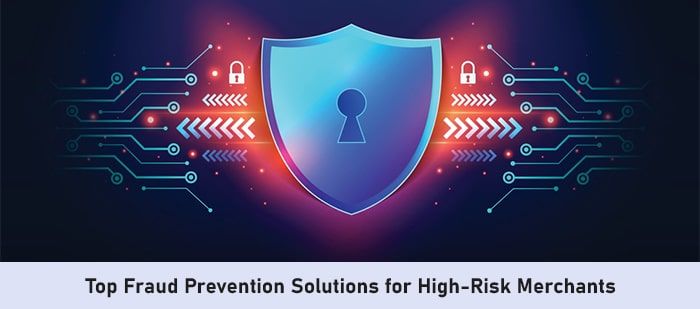
An Overview of Fraud Risks Faced by Merchants
Merchants in high-risk sectors encounter a wide range of fraud risks. These include credit card fraud, identity theft, chargeback fraud, and more sophisticated scams like account takeover and phishing. High-risk merchants often manage substantial transaction volumes and diverse customer bases, making them attractive targets for fraudsters.
Fraud can have serious consequences, causing financial loss, damaging reputation, and even leading to legal problems. It’s crucial for merchants to stay vigilant and implement robust fraud prevention strategies to protect their businesses.
Credit card fraud involves unauthorized transactions using stolen card details. Merchants might notice red flags such as multiple declined transactions or mismatched billing and shipping addresses. Chargeback fraud, also known as friendly fraud, happens when customers dispute legitimate transactions. Frequent chargeback requests from the same customer or inconsistencies between purchase and dispute claims can be warning signs.
Identity theft occurs when fraudsters use stolen personal information to make purchases. Unusual order volumes or transactions from high-risk regions should raise suspicion. Phishing scams trick merchants into revealing sensitive information, so always verify the authenticity of requests for account or payment details.
Recognizing these risks and their indicators is essential for high-risk merchants to take proactive measures in fraud prevention.
Some Related Blogs
- How to Implement a Robust Fraud Prevention System
- Impact of AI in Fraud Prevention for Online Retailers
- Fraud Prevention Best Practices Every Merchant Should Know
- Why Fraud Prevention is Critical for E-commerce Merchants
Recognizing Common Fraud Tactics
Understanding the tactics fraudsters use is key for high-risk merchants. One frequent method is credit card fraud, involving unauthorized transactions made with stolen card details. Warning signs include multiple declined transactions or mismatched billing and shipping addresses.
Chargeback fraud, or friendly fraud, occurs when a customer disputes a legitimate transaction. Indicators include frequent chargeback requests from the same customer or discrepancies between the purchase and dispute claims.
Identity theft involves fraudsters using stolen personal information to make purchases. Unusual order volumes or transactions from high-risk regions should prompt scrutiny.
Phishing scams trick merchants into revealing sensitive information. Always verify the authenticity of requests for account or payment details to avoid falling victim to these scams.
By staying informed about these tactics, high-risk merchants can better protect their businesses from fraud.
Cutting-Edge Tools for Fraud Detection
With the rise of technology, merchants now have access to advanced tools that can significantly enhance fraud detection efforts. Artificial intelligence (AI) and machine learning (ML) have emerged as key technologies in identifying and preventing fraudulent activities.
![]()
Email us anytime!
Email customer service 24/7
![]()
Call us anytime!
Reach customer care 24/7 at +1 (888) 901-8653
These technologies analyze vast amounts of data to detect patterns and anomalies that may indicate fraudulent behavior. One of the primary advantages of AI-driven tools is their ability to provide real-time monitoring and adapt to new fraud tactics.
Several innovative software solutions are available to help high-risk merchants combat fraud effectively:
– Fraud Detection Platforms: Utilizing machine learning algorithms, these platforms can identify suspicious transactions by analyzing patterns and behaviors. They offer valuable insights that help merchants make informed decisions about which transactions to approve or decline.
– Behavioral Analytics Tools: By examining customer behavior, these tools can identify deviations from typical patterns, which might suggest fraudulent activity. For instance, if a customer who usually makes small purchases suddenly attempts a large transaction, the system can flag it for further investigation.
– Identity Verification Solutions: These tools help verify that customers are who they claim to be by cross-referencing various data points. This reduces the risk of identity theft and ensures that only legitimate customers complete transactions.
– Geolocation Tools: These solutions verify the geographic location of a transaction, alerting merchants if the location is unusual or does not match the customer’s profile. This can help prevent unauthorized purchases, especially those that originate from regions known for high fraud rates.
– Device Fingerprinting: This technology collects information about the device used in a transaction, such as its operating system, browser type, and IP address. By creating a unique “fingerprint” for each device, merchants can detect when a transaction is attempted from a new or suspicious device.
– Multi-Factor Authentication (MFA): Implementing MFA adds an extra layer of security by requiring customers to provide additional verification, such as a one-time code sent to their phone, in addition to their password. This makes it more challenging for fraudsters to gain unauthorized access to accounts.
By integrating these advanced tools into their systems, high-risk merchants can more effectively identify and mitigate fraudulent activities, leveraging the latest technology to safeguard their operations.
Utilizing Data Analytics to Prevent Fraud
Data analytics is indispensable in combating fraud for high-risk merchants. By examining transaction data, customer behavior, and other pertinent information, merchants can detect trends and irregularities that may signal fraudulent activities.
Several techniques can enhance security measures through data analytics:
– Predictive Analytics: By leveraging historical data, merchants can forecast potential fraud scenarios and take preventive measures. This approach allows businesses to anticipate fraud patterns and respond proactively.
– Risk Scoring: Assigning risk scores to transactions based on a variety of factors enables merchants to assess the likelihood of fraud. High-risk transactions can be flagged for further scrutiny, allowing merchants to focus their resources on the most suspicious activities.
– Real-Time Data Monitoring: Constant surveillance of transaction data enables merchants to identify and react to fraudulent activities as they happen. This immediate response capability is critical for preventing fraud from progressing.
– Customer Segmentation: Analyzing customer data to segment users into different categories based on their behavior and transaction history can help merchants identify unusual patterns. For example, if a user typically makes small purchases and suddenly makes a large transaction, it can be flagged for review.
– Machine Learning Models: These models can be trained to recognize patterns and anomalies in transaction data, making them effective for identifying fraudulent behavior. Over time, machine learning algorithms can improve their accuracy by learning from new data, thereby enhancing their fraud detection capabilities.
– Anomaly Detection: Using statistical methods to identify outliers in transaction data can help merchants pinpoint potentially fraudulent activities. For instance, transactions that deviate significantly from a customer’s usual spending behavior can be flagged for further investigation.
– Data Visualization: Visualizing transaction data through graphs and charts can help merchants quickly identify trends and anomalies. This can make it easier to spot suspicious activities that might not be immediately apparent through raw data analysis.
By incorporating these data analytics techniques, high-risk merchants can better safeguard their operations against fraud. The proactive use of data not only helps in identifying potential threats but also enables more informed decision-making, ensuring a robust defense against fraudulent activities.




